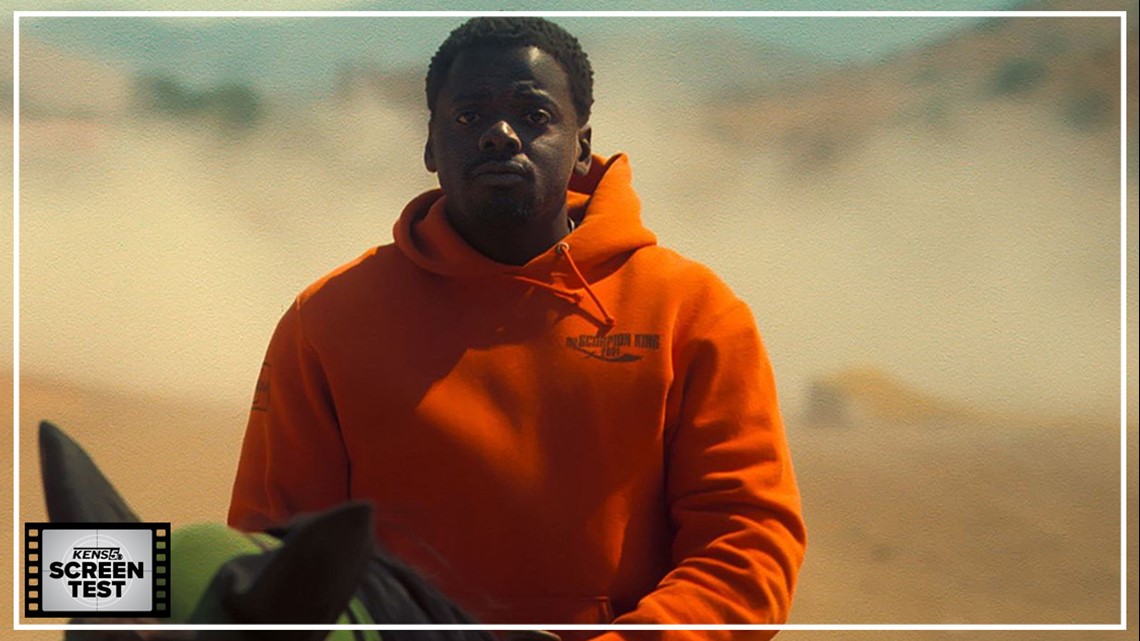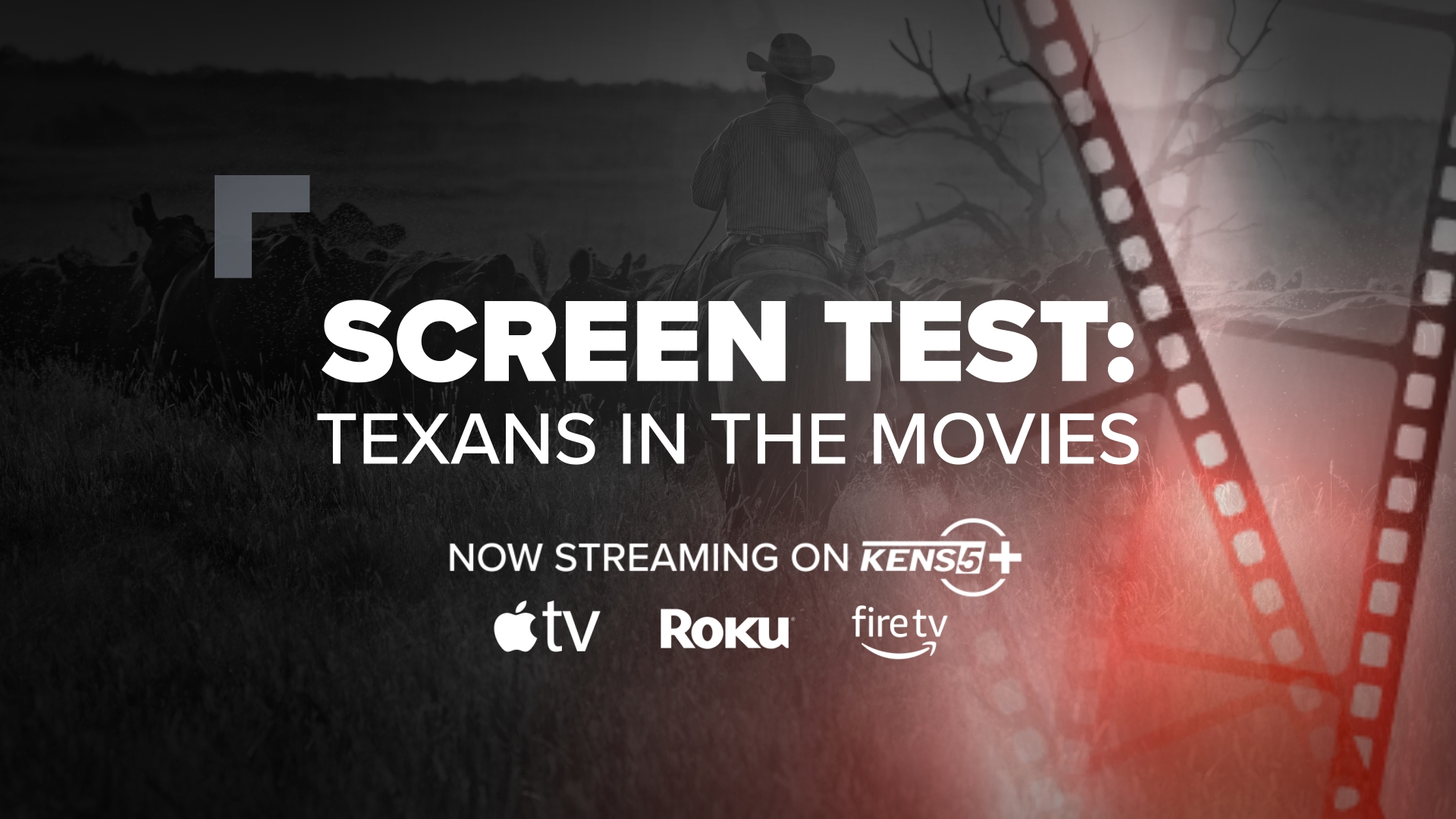SAN ANTONIO — The first time “UFO” is uttered in Jordan Peele’s “Nope” – a moody, macabre and mighty entertaining third feature from one of American cinema’s most viciously smart directors – it isn’t accompanied with a gasp of terror or dramatic instrumental cue, but with the proverbial lighting up of dollar signs in a time when even the presence of a potentially world-ending force is just waiting to be commodified.
Even in the overwhelming Californian canyons where “Nope’s” genre-skipping thrills unfold, the potential for headline-making spectacle is a galvanizing force for stunthorse trainer siblings OJ and Emerald Haywood (Daniel Kaluuya and Keke Palmer). We might think they live isolated from the spotlight-craving mania of the filmmaking industry their family has long worked in, but those presumptions are vaporized once top-notch security systems are installed around their ranch. So what if the ominous black disc OJ spots zipping over Haywood’s Hollywood Horses has a malicious intent—just imagine what might await if the world saw what he’s seeing. Then again, while fuzzy images of funny shapes in the sky might go viral, “it ain’t Oprah.” If they want to capture definitive footage of the flying saucer stalking them, they’re gonna need a bigger camera.
And perhaps a bigger mirror turned back on themselves, too, though as an on-set accident involving a Haywood’s horse suggests, we might never be prepared for what we’ll see. Peele has proven as much through his first three films, each successful and strange in their own ways, to say nothing of how the writer-director has weaponized pure moviegoing pleasure as gateway to timely self-examination.
“Nope” is firmly of apiece with that ethos, and also a commentary on it. The omnipresence of screens is a desensitizing force in Peele’s latest, and has been ever since a fictional sitcom ended in a massacre at the paws of its chimpanzee leading star. That “Nope” opens in the bloodbath’s immediate aftermath – a haunting, inexplicable and strangely entrancing prelude – is a welcome early sign that Peele isn’t indulging in blockbuster-scale ambitions without forgetting the challenge to audiences that’s now become his trademark: Between the laughs and the screams, consider why the film is being presented to you in the form that it is.
Sound like too tough a bargain? Fair enough; Thor, Chris Pratt and some minions are available to relieve you of the burden, though after the divisive climax of “Us” it’s worth pointing out that “Nope” more tightly embraces its purer pleasures from start to finish. The result is a movie that sneakily weaves captivating ideas about artistic anonymity within the pop culture fabric of iconic touchstones like “Jaws,” “Signs” and even “The Blair Witch Project.”
What Peele appears to be pointing us to is how TMZ’s glamorizing of the vile is a natural end result of the bloodlust audiences who grew up at the multiplex were encouraged to embrace en masse as far back as half a century ago. Perhaps it isn’t a mistake that the cast appears to be gazing up at a movie screen in the film’s poster. That the genre-shifting “Nope” is a bonafide summer spectacular cut from the same crowdpleasing cloth doesn’t make it an excuse for Peele to indulge in the widest canvass yet afforded to him as a filmmaker, but something far more interesting: a reckoning with the medium, one that is by turns philosophical, moral and technological.
It’s also, on a simpler level, a rollicking fun time at the movies, if one that hews a bit closely to its cinematic forebears’ tendency for roughly sculpted characters and thin melodrama. It would be hard to invest in OJ and Emerald if it wasn’t for the performers in their shoes; even the sloggier moments in “Nope” are elevated by an electric contrast between the brooding Kaluuya and firecracker Palmer, who are more than game to briefly trade affects in an effort to convince us that the siblings’ personal histories are made moot by the mission they embark on in “Nope.” Joined by the relatively unknown Brandon Perea as the wily and naturally comedic Angel, a partner-in-UFO-documenting-crime, “Nope” is anchored by a fantastic trio of just-capable-enough heroes.
Meanwhile, more time could have been made for Steven Yeun’s Ricky Park, a former child star coping with the residual memories of having survived the aforementioned chimp attack years prior. Ricky could’ve been less a character than a walking, talking existential idea, but here again Peele is justified by his cast: Yeun sheds his typical joviality to embody a presence so quietly volatile that a few scenes are all he needs to underscore one of “Nope’s” many fascinating delineations—namely, the line between showbiz as spiritual calling and showbiz as a way to make a living.
Regardless, while this might be the wobbliest of Peele’s screenplays, that doesn’t mean as much when “Get Out’s” script won him an Oscar and “Us” offers a blank canvas upon which to project something in the neighborhood of a bajillion takeaways. It also matters less because “Nope,” a movie concerned about the contradictions of cinema, is in and of itself Peele’s most cinematic effort; a grand showcase of a filmmaker already boasting a knack for bold iconography taking $68 million and stretching every cent to their rapturous limit. It’s been a long time since a summer blockbuster felt this tangible with its things that go bump (or, in this case, whoosh) in the night. “Nope” toys wickedly with sound, establishing distant shrieks as essential to the soundscape of Haywood’s, and turns the movie’s lonely vistas into epic set-piece stages.


The accompanying adornments run the gamut from Gothic horror, Western showdown and supernatural suspense – kudos to A-list cinematographer Hoyte Van Hoytema for knowing what makes each genre tick visually – and while the pacing isn’t smooth enough to prevent some tonal whiplash, Peele compensates with consistently stellar ambience. Bursts of wonder punctuate the steady plotting that Peele and Van Hoytema harmonize through their aesthetic carousel; a simple technique is made newly wondrous when the camera remains at OJ’s level while he’s tormented by the malevolent ship that eventually unfurls surprises of its own, backed by the engrossing versatility of Michael Abels’ score.
This is all to say: Those hoping for a good time with “Nope” can expect a splendidly good time. And those hoping for more will be tractor-beamed towards more meaningful payoffs, similar to how the talents and cameras of legendary videographer Antlers Holst (a wonderfully off-kilter Michael Wincott) are eventually enlisted in order to attain “the impossible shot.” Fashioned as a mysterious lone ranger archetype, Antlers is good for some amusement as a character who doesn't know the different between documenting and surviving. But he also personifies a desperation that would be absurd if it didn’t ring so true after the nation collectively shrugged off the government’s official acknowledgment of UFOs last year, as if our capacity to be enthralled was limited to the sight directly in front of us—whether it's in the sky, a blurry photo or the cinema screen.
"Nope" is rated R for language throughout and some violence/bloody images. It's now showing in theaters. Runtime: 2 hours, 11 minutes.
Starring Daniel Kaluuya, Keke Palmer, Brandon Perea, Michael Wincott.
Written and directed by Jordan Peele.
---
MORE REVIEWS
- ‘Thor: Love and Thunder’ Review: The MCU’s grandest parody and its sparest drama
- ‘Both Sides of the Blade’ Review: Claire Denis' barbed-wire marriage story carves into convention
- Movie reviews: Minions: The Rise of Gru, Mr. Malcolm's List
- Movie reviews: Elvis, The Black Phone
- ‘Good Luck to You, Leo Grande’ Review: Sex-positive comedy defies convention, and has plenty of heart too
- Movie reviews: Lightyear, Cha Cha Real Smooth
- Review | 'Jurassic World Dominion': The thrill has gone far away from here
- ‘Crimes of the Future’ Review: Old-school Cronenberg’s return is gloriously off-kilter and sneakily profound



